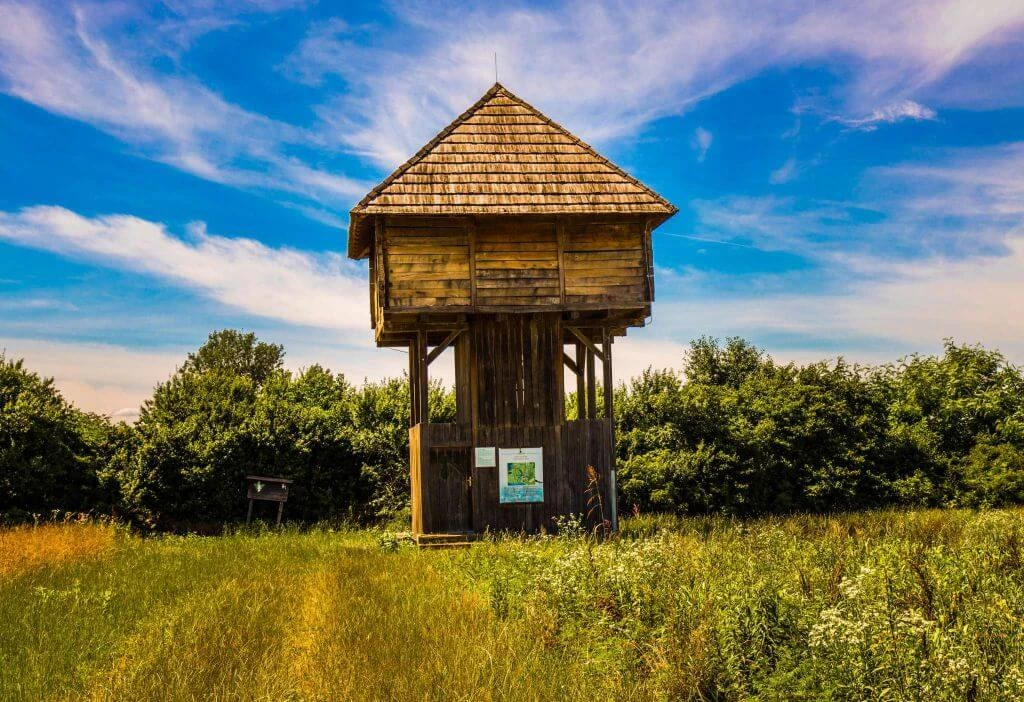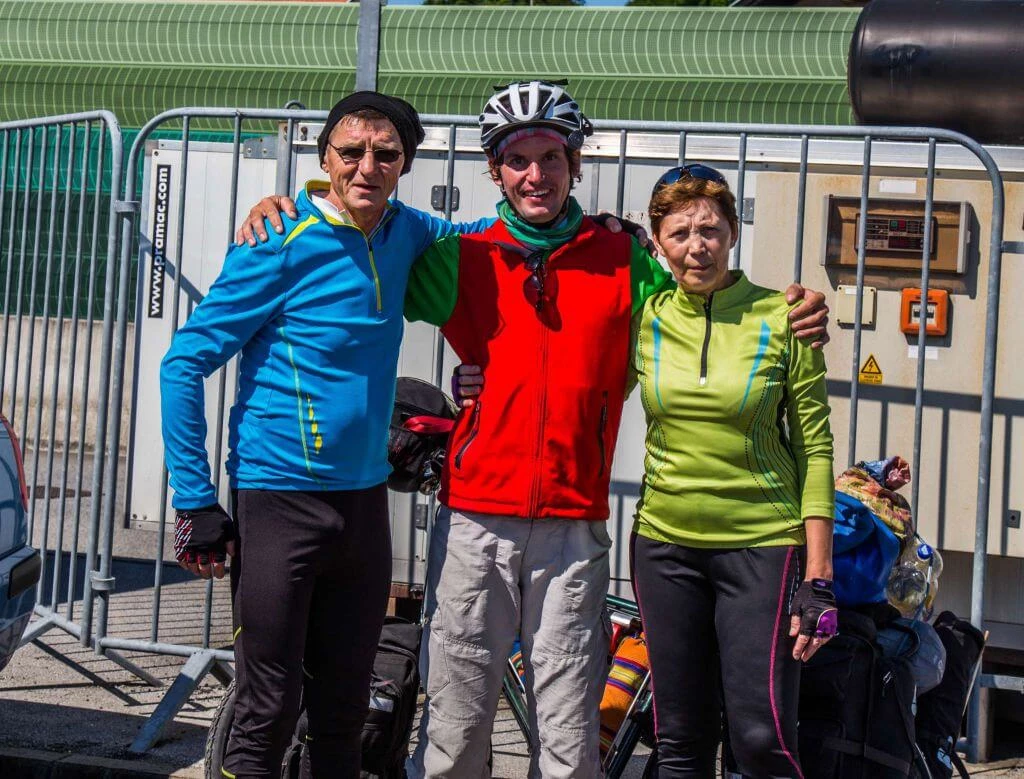In the stork country
Wednesday, July 15, 2015
- Three Continents
After only a few kilometers I arrived in the capital of Croatia. Zagreb has a very special flair. Only at 21:00 o'clock in the evening I found a youth hostel near the central station. Zagreb is already over 900 years old and has a lot to offer. Many museums and parks are scattered around the city. Actually I wanted to continue after one day. But I liked the city so much that I stayed two days longer.

The first few kilometers out of town led along the Sava River. For the last time for a long time I could drive again on a secluded dirt road. But after a short time the way was over and I had to go back to the road.
The first great encounters I already had the next day in Sisak. A few ladies took care of my bike in front of the church, gave me 4 liters of drinks and two amulets for my onward journey. The climax came shortly thereafter at the fortress of Sisak. There a group of cyclists arrived shortly after me. They took me straight to a free visit and then pizza.

Ksenija, a member of the group and her husband, immediately organized the other overnight stays on my trip through Croatia. Throughout Croatia there is a network of cycling enthusiasts who gather in every city and make regular trips together. People of all ages can participate. No matter how fit and sporty you are. A great thing.
First I crossed the nature park Lonjsko polje the next day. It is one of Europe's largest and best preserved wetlands along the Sava River. Alone 239 species of birds live in this nature park. Due to the number of about 45 stork nests, the village of Cigoc, located in the Natural Park, was the first European village to receive the "European stork village" award in 1994. The old traditional wooden houses with the stork nests on top are beautiful and life here makes a really idyllic impression.
In Krapje I was able to cycle through the reserve. At the park administration I got a key for the observation towers in the reserve. From above you can observe especially the spoonbills (Platalea leucorodia) very well.

The next day I was able to spend the night with the parents of Ksenija in Jasenovac. At the end of the village there is a memorial. The Jasenovac concentration camp was the largest concentration and extermination camp in the Fascist Independent State of Croatia (NDH) during the Second World War, and one of the largest in Europe. It was the only extermination camp in the Second World War in Europe, in which was murdered without German participation on schedule. Serbs, but also many Jews and Roma, as well as opponents of the regime, including Croats and Bosnian Muslims, died in Jasenovac.

Another chapter of Croatian history followed shortly thereafter on the way to Nova Gradiska. The Yugoslav war of the 1990s has destroyed many industries. Some villages have been abandoned almost completely. On many buildings you can still see the traces of the war.

In Nova Gradiska I was welcomed by Ivan, the president of the local velocclub. Together with a few club members they invited me to pizza. They told me a lot about the region. Because the economic situation is so bad here, most people are attracted either to the south of Croatia or abroad. Ivan earns just 500.- Euro per month as a border official. To finance my trip I had to work 2 years in Switzerland. Compared to the income here in Croatia, I would have had to work at salary for at least 10 years.

The next day we continued to Slovanski Brod. The whole route is actually a whole long drawn village. In Slovanski Brod I was hosted by Ilica and Branka. Her daughter was also visiting from Ireland and acted as translator for us. They spoiled me for all the art of hospitality.
Finally, they escorted me across the border to Bosnia and Herzegovina and gave me a T-shirt from their cycling club. I was simply overwhelmed by the hospitality of these people. Puno Hvala Hrvatska!
